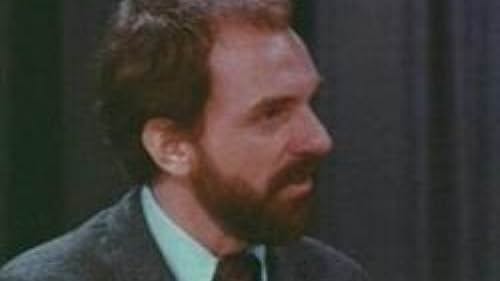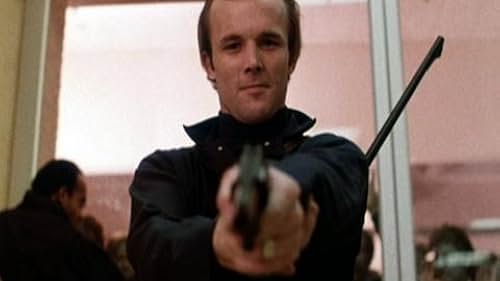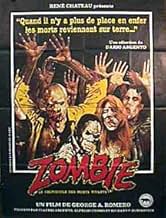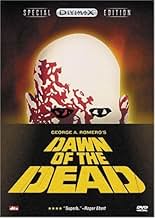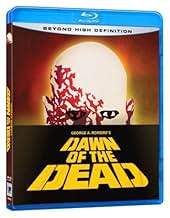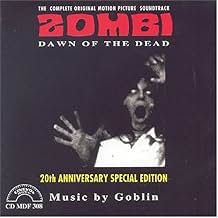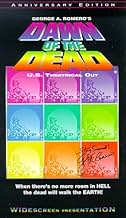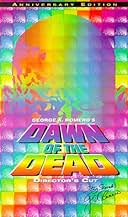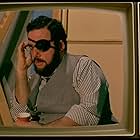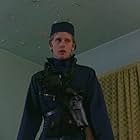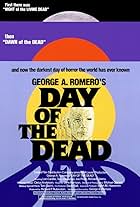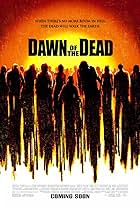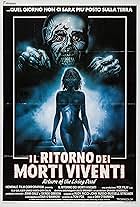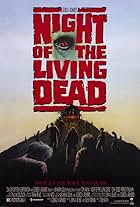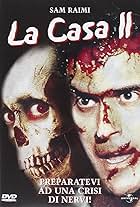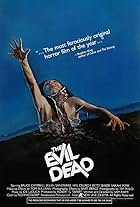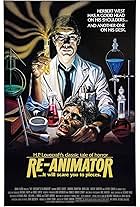"In questo primo sequel de ""La notte dei morti viventi"", un gruppo di quattro persone si stabilisce in un centro commerciale abbandonato mentre tentano di restare vivi tra gli eserciti di ... Leggi tutto"In questo primo sequel de ""La notte dei morti viventi"", un gruppo di quattro persone si stabilisce in un centro commerciale abbandonato mentre tentano di restare vivi tra gli eserciti di zombi ed una violenta banda di motociclisti. (scritto da Todd A. Bobenrieth <TAB146@PSUVM.... Leggi tutto"In questo primo sequel de ""La notte dei morti viventi"", un gruppo di quattro persone si stabilisce in un centro commerciale abbandonato mentre tentano di restare vivi tra gli eserciti di zombi ed una violenta banda di motociclisti. (scritto da Todd A. Bobenrieth <[email protected]>)"
- Regia
- Sceneggiatura
- Star
- Premi
- 3 vittorie e 2 candidature
- Wooley
- (as Jim Baffico)
Trama
Lo sapevi?
- QuizTom Savini chose the gray color for the zombies' skin, since La notte dei morti viventi (1968) was in B&W and the zombie skin-tone was not depicted. He later said it was a mistake, because many of them ended up looking quite blue on film.
- BlooperWhen Roger runs out of a truck and back toward the mall, one particular zombie in a red-and-black striped shirt gets out of character and decides to tuck in his shirt.
- Citazioni
Francine Parker: They're still here.
Stephen: They're after us. They know we're still in here.
Peter: They're after the place. They don't know why; they just remember. Remember that they want to be in here.
Francine Parker: What the hell are they?
Peter: They're us, that's all. There's no more room in hell.
Stephen: What?
Peter: Something my granddaddy used to tell us. You know Macumba? Voodoo. Granddad was a priest in Trinidad. Used to tell us, "When there's no more room in hell, the dead will walk the Earth."
- Curiosità sui creditiGeorge A. Romero appears on screen as a TV Station Director (the bearded man wearing a scarf and a blue shirt) as his name appears, listing him as "Editor", in the on-screen credits beneath him.
- Versioni alternativeThe original UK cinema version (aka Romero's 'theatrical print') was cut by 3 mins 46 secs by the BBFC to remove an exploding head and a screwdriver killing plus stabbings and scenes of disembowelment, and the 1989 video version lost a further 12 secs of gore and shooting plus a scene of a woman's neck being bitten during the housing project sequence. Some cuts were restored in the alternate 1997 Directors Cut video although 6 secs remained missing including the exploding head, neck bite and an additional edit to the shooting of the two zombie children (in response to the 1997 Dunblane massacre). All cuts were fully waived in 2003 from both the Directors Cut and the original theatrical versions. The later Blu-Ray release by Arrow was uncut as well.
- ConnessioniEdited into Cent une tueries de zombies (2012)
The film starts explosively, inside a panicking TV station trying to report on the inexplicable emergence from the earth of the undead. An assorted quartet - two media, two army; three white, one black; three men, one woman - escape in a helicopter used for rush-hour traffic reports. There is a sense of relief in this, a sense of breaking free from the circle of undead enclosing America's major cities.
But not for long - it seems that modern American man, unlike his pioneering ancestors, cannot stand open spaces, and holes up in a building, a shopping
mall, which is crawling with zombies, and recognised by the woman as a prison. Not content with this level of confinement, our heroes draw plans, erect barriers, shut down grids. Romero pinpoints this national insularity by framing his modern horror movie as a transposed Western, with the foursome as latterday frontiersmen wiping out the natives, and erecting a new civilisation.
Some might say that Romero's irony is a little heavy here - the mock-triumphal Western music on the soundtrack; the composition of the four at the height of the crisis standing in front of a sign with just the letters 'U' and 'S' visible; the glee in the gun culture, including an ersatz Western gun store in the mall the 'Red River' like beseiging of the mall by the 'Indian' Hells' Angels on their motorbike/horses complete with tomahawks. But such irony is never stable - Romero keeps pulling the ground from under the viewers' feet, both in terms of character identification, and the shifting meanings embodied by the zombies.
Romero's terrifying vision is of an America turned in on itself, eating itself through cannibalistic greed, the very system of capitalism based on a cycle of power and repression in which the repressed will never quite go away. 'Night' pulsated with a late 1960s urgency reflecting contemporary social and political upheaval, white capitalist America beseiged by the peoples it had oppressed for centuries. By 1978, that political anger is gone, and America has reverted to being a race of consumer zombies, congregating around massive shopping malls like they're the religious temples of the Incas, trapped there not by the freedom of choice of capitalist propaganda, but mindless instinct.
the zombies are supposed to be the enemy, the Other in conventional horror terms, but the first thing the so-called heroes do on landing at the mall is substitute urgent survival for gleeful consumerism (compare with the very similar silent fantasy, 'Paris Qui Dort'). There's no way to deal with any outside threat because we are numbed and bloated by products. Reality ceases to exist; there are some beautifully surreal scenes, as our heroes make homes in showrooms.
The mall sequence as a whole has a Bunuellian savagery about it, and the film builds up an aggression like the characters until all is chaos - tones, modes, genres all colliding, the 'reality' or 'integrity' or, even, 'seriousness' of the film as much in question as the modern world the protagonists live in, where even time seems to stand still, the weeks of the action compressed into the framework of a day, with the night of the living dead giving onto the dawn. It is probably allegorically significant which characters survive, but by the end we're not sure whether we're watching a horror, a comedy, a thriller, a Western, or a very bitter joke. Certainly scarier than 'The Stepford Wives'
- the red duchess
- 9 gen 2001
- Permalink
I più visti
Dettagli
- Data di uscita
- Paesi di origine
- Lingue
- Celebre anche come
- L'alba dei morti
- Luoghi delle riprese
- Monroeville Mall - Business Route 22, Monroeville, Pennsylvania, Stati Uniti(the shopping mall)
- Aziende produttrici
- Vedi altri crediti dell’azienda su IMDbPro
Botteghino
- Budget
- 650.000 USD (previsto)
- Lordo in tutto il mondo
- 159.822 USD
- Tempo di esecuzione2 ore 7 minuti
- Mix di suoni
- Proporzioni
- 1.85 : 1


